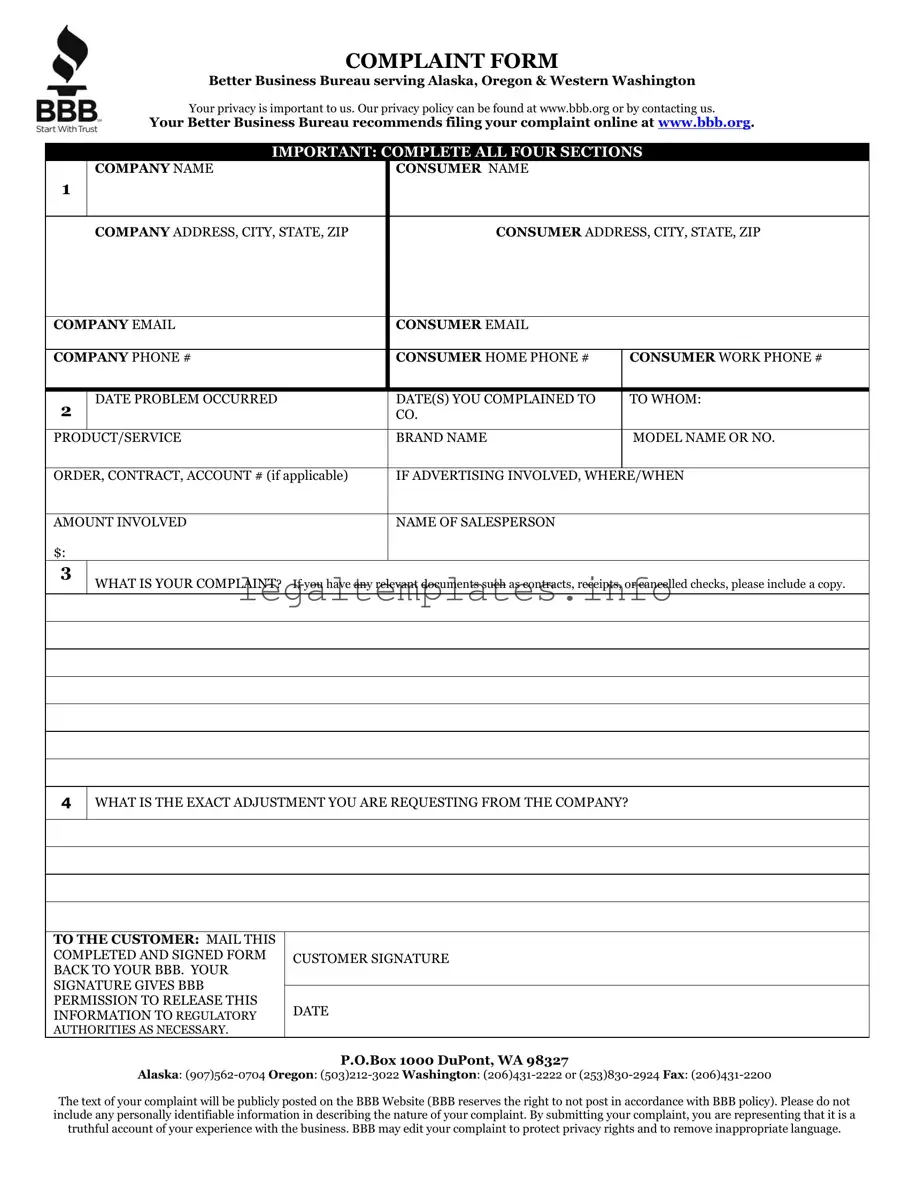Filling out the BBB (Better Business Bureau) Complaint Form is a step many consumers take when they're facing issues with a business and feel their concerns have not been properly addressed. However, this process can sometimes go awry due to common mistakes made during the submission. Being aware of these pitfalls can greatly increase the effectiveness of your complaint.
One of the most frequent errors is providing incomplete information. The form requires specifics about the business, such as its name, address, and the details of the transaction in question, including dates and amounts. When this information is left vague or incomplete, it hampers the BBB's ability to process the complaint efficiently and can lead to unnecessary delays.
Another mistake is failing to describe the problem clearly and concisely. It's important to articulate the issue in a straightforward manner, avoiding emotional language. The goal is to present the facts of the situation as clearly as possible, as this will help the BBB understand your perspective and the resolution you are seeking.
Many individuals also overlook the necessity of stating a clear desired outcome. Whether it's a refund, exchange, or another form of resolution, being explicit about what you want from the business helps the BBB facilitate dialogue between both parties. Without a clear resolution in mind, the mediation process can become muddled.
Submitting evidence is another critical step that is often skipped. Evidence can include receipts, emails, photographs, or any relevant documentation that supports your complaint. This evidence can significantly strengthen your case, yet many forget to attach it or assume it's not crucial.
Some people rush to file a complaint with the BBB before attempting to resolve the issue directly with the business. This can sometimes lead to a more prolonged resolution process. It's generally advisable to first contact the business to see if the issue can be resolved amicably, as many businesses are willing to address customer concerns directly to maintain a good reputation.
Another common mistake is neglecting to check if the business is actually covered by the BBB. Not all businesses are members or are within the BBB’s jurisdiction. Submitting a complaint about a business that is not within the BBB's scope is futile and will simply waste time.
Some consumers submit multiple complaints for the same issue, mistakenly believing that this will lead to quicker action. However, this can actually complicate and slow down the investigation process. It's best to file a single, well-documented complaint.
Ignoring follow-up communications from the BBB is yet another error. The organization may reach out for additional information or to inform you of the business's response. Not responding in a timely manner can halt progress on your complaint. Keeping an eye on your email and responding to BBB inquiries is crucial for the complaint to move forward.
Last but not least, setting unrealistic expectations can lead to disappointment. The BBB aims to facilitate communication and help reach a fair resolution, but it does not have legal enforcement powers. Understanding the limitations of what the BBB can achieve helps set more realistic expectations for the outcome of your complaint.

